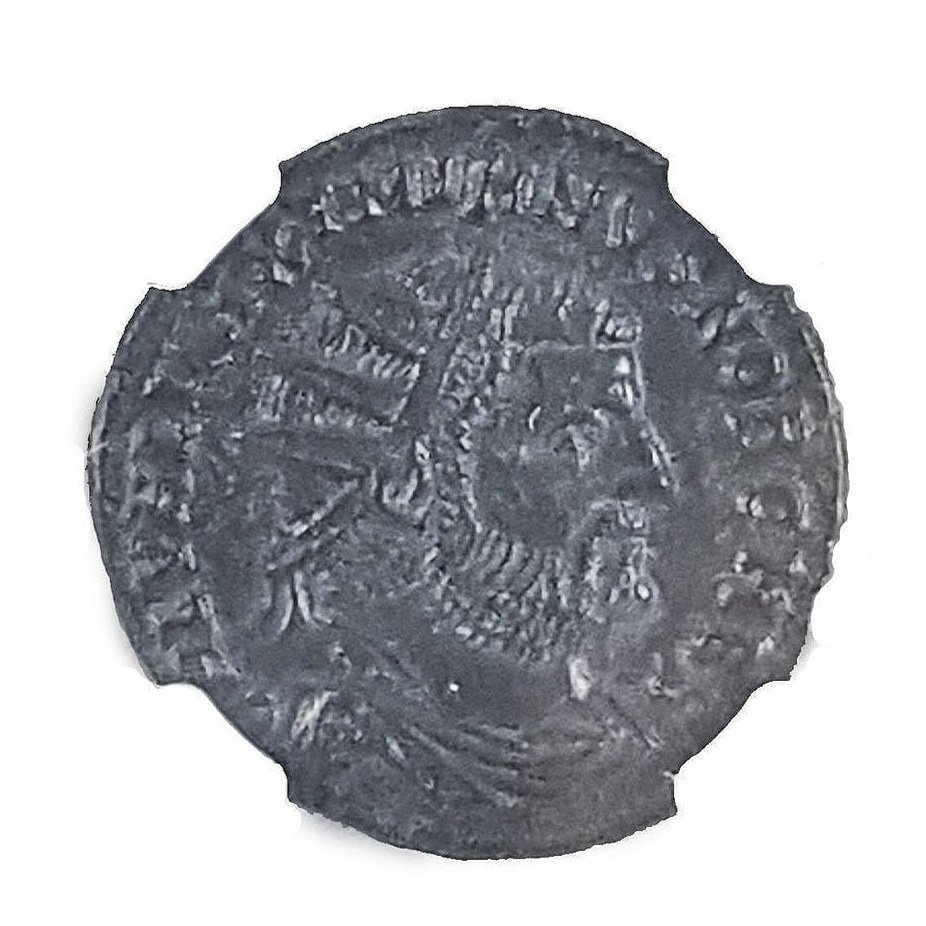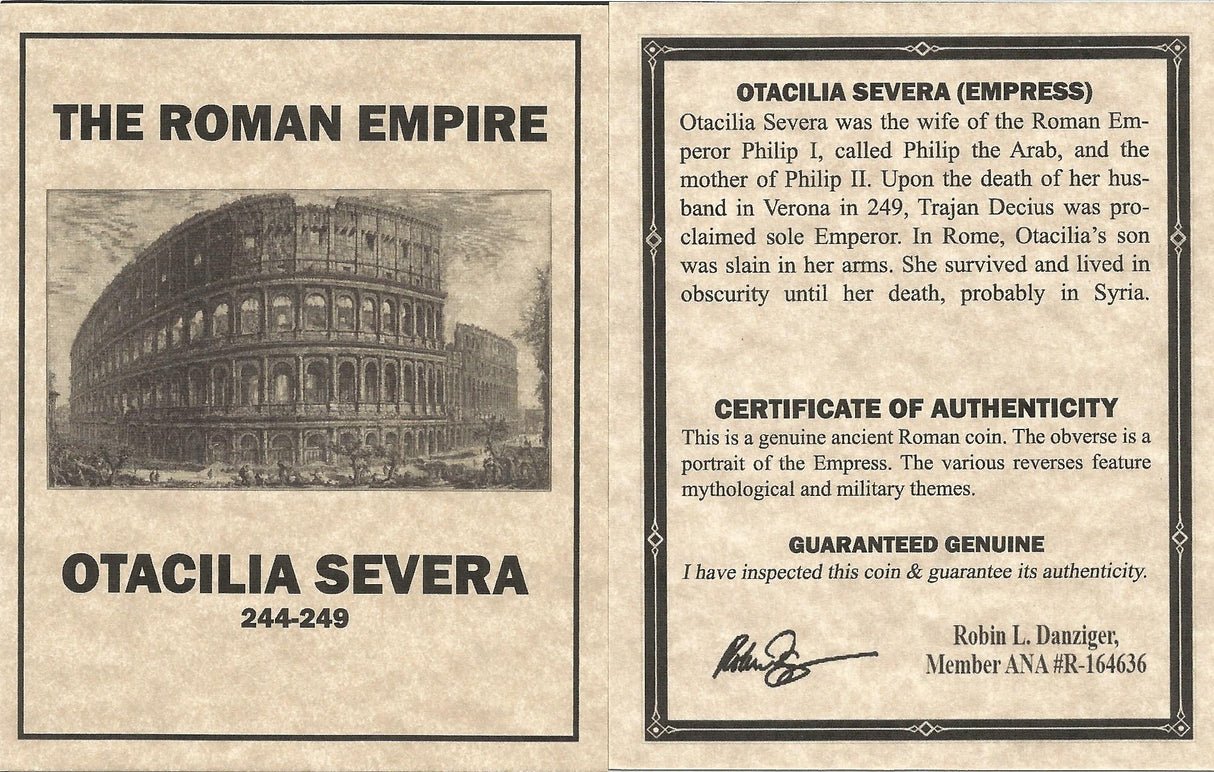 Image 1 of 9
Image 1 of 9

 Image 2 of 9
Image 2 of 9

 Image 3 of 9
Image 3 of 9

 Image 4 of 9
Image 4 of 9

 Image 5 of 9
Image 5 of 9

 Image 6 of 9
Image 6 of 9

 Image 7 of 9
Image 7 of 9

 Image 8 of 9
Image 8 of 9

 Image 9 of 9
Image 9 of 9










Roman AE Coin of Galerius (about 1,715-1,733 years ago)
This bronze coin was minted during the reign of Galerius, who served as Caesar (junior emperor) and later Augustus (senior emperor) in the late Roman Empire. As part of the Roman monetary system during the Tetrarchic period, this coin represents an important artifact from a time when the Empire was divided into administrative regions for better governance.
Coin Description:
Front side: Portrait of Galerius wearing a radiate crown or laureate wreath, with his name and titles in Latin around the edge
Back side: Likely depicts Roman deities, personifications of virtues, or military imagery common to coins of this period
Technical Details:
Bronze composition (AE stands for "Aes" meaning bronze in Latin)
Imperial Roman denomination (specific value dependent on weight and period)
NGC certified (Numismatic Guaranty Company authentication)
Minted between 293-311 CE
Condition as noted in NGC slab
Historical Significance:
Galerius rose from humble beginnings as a soldier during the reigns of Emperors Aurelian and Probus to become an important figure in the Tetrarchy, a system of government instituted by Emperor Diocletian where power was divided among four rulers. Initially appointed as Caesar (junior emperor) in 293 CE, Galerius later became Augustus (senior emperor) in 305 CE. He is known for his military campaigns against the Persian Sassanid Empire and for his persecution of Christians prior to the religious tolerance that would later emerge under Constantine. This coin circulated during a pivotal transitional period in Roman history as the classical empire was transforming into what would become the Byzantine Empire.
This bronze coin was minted during the reign of Galerius, who served as Caesar (junior emperor) and later Augustus (senior emperor) in the late Roman Empire. As part of the Roman monetary system during the Tetrarchic period, this coin represents an important artifact from a time when the Empire was divided into administrative regions for better governance.
Coin Description:
Front side: Portrait of Galerius wearing a radiate crown or laureate wreath, with his name and titles in Latin around the edge
Back side: Likely depicts Roman deities, personifications of virtues, or military imagery common to coins of this period
Technical Details:
Bronze composition (AE stands for "Aes" meaning bronze in Latin)
Imperial Roman denomination (specific value dependent on weight and period)
NGC certified (Numismatic Guaranty Company authentication)
Minted between 293-311 CE
Condition as noted in NGC slab
Historical Significance:
Galerius rose from humble beginnings as a soldier during the reigns of Emperors Aurelian and Probus to become an important figure in the Tetrarchy, a system of government instituted by Emperor Diocletian where power was divided among four rulers. Initially appointed as Caesar (junior emperor) in 293 CE, Galerius later became Augustus (senior emperor) in 305 CE. He is known for his military campaigns against the Persian Sassanid Empire and for his persecution of Christians prior to the religious tolerance that would later emerge under Constantine. This coin circulated during a pivotal transitional period in Roman history as the classical empire was transforming into what would become the Byzantine Empire.
This bronze coin was minted during the reign of Galerius, who served as Caesar (junior emperor) and later Augustus (senior emperor) in the late Roman Empire. As part of the Roman monetary system during the Tetrarchic period, this coin represents an important artifact from a time when the Empire was divided into administrative regions for better governance.
Coin Description:
Front side: Portrait of Galerius wearing a radiate crown or laureate wreath, with his name and titles in Latin around the edge
Back side: Likely depicts Roman deities, personifications of virtues, or military imagery common to coins of this period
Technical Details:
Bronze composition (AE stands for "Aes" meaning bronze in Latin)
Imperial Roman denomination (specific value dependent on weight and period)
NGC certified (Numismatic Guaranty Company authentication)
Minted between 293-311 CE
Condition as noted in NGC slab
Historical Significance:
Galerius rose from humble beginnings as a soldier during the reigns of Emperors Aurelian and Probus to become an important figure in the Tetrarchy, a system of government instituted by Emperor Diocletian where power was divided among four rulers. Initially appointed as Caesar (junior emperor) in 293 CE, Galerius later became Augustus (senior emperor) in 305 CE. He is known for his military campaigns against the Persian Sassanid Empire and for his persecution of Christians prior to the religious tolerance that would later emerge under Constantine. This coin circulated during a pivotal transitional period in Roman history as the classical empire was transforming into what would become the Byzantine Empire.
Galerius Valerius Maximianus[j] (/ɡəˈlɛəriəs/; Greek: Γαλέριος; c. 258 – May 311) was Roman emperor from 305 to 311. While acting as Caesar under Emperor Diocletian, Galerius obtained victory warring against the Persian Sassanian Empire, defeating Narseh at the battle of Satala in 298 and possibly sacking the Sassanian capital of Ctesiphon in 299. He also campaigned across the Danube against the Carpi, defeating them in 297 and 300. Although he was a staunch opponent of Christianity, Galerius ended the Diocletianic Persecution when he issued the Edict of Toleration in Serdica (Sofia) in 311.
Galerius was born in the Danube provinces, either near Serdica[13] or at the place where he later built his palace named after his mother – Felix Romuliana (Gamzigrad).[14][15] Under this palace, an older villa has been found that is sometimes interpreted as Galerius' birthplace.[16] His Thracian father and his mother, Romula, had left Roman Dacia (today Romania) because of the Carpians' attacks.[17][18]: 19 He originally followed his father's occupation, that of a herdsman, where he was nicknamed "Armentarius", herdsman (Latin: armentum, lit. 'herd').[19] His original cognomen was "Maximinus", but he changed it to "Maximianus" after becoming Caesar.[4]

































